What it's like inside the only permanent undersea research lab in the world
The lab sits about 63 feet underwater on a sandy patch near Conch Reef, about nine miles south of Key Largo.

Aquarius was originally a National Oceanic and Atmospheric Administration (NOAA) facility, but a few years ago, “they were thinking about pulling it out of the water,” says Heithaus.

FIU took over the lab’s operation to expand their marine research and education capabilities.
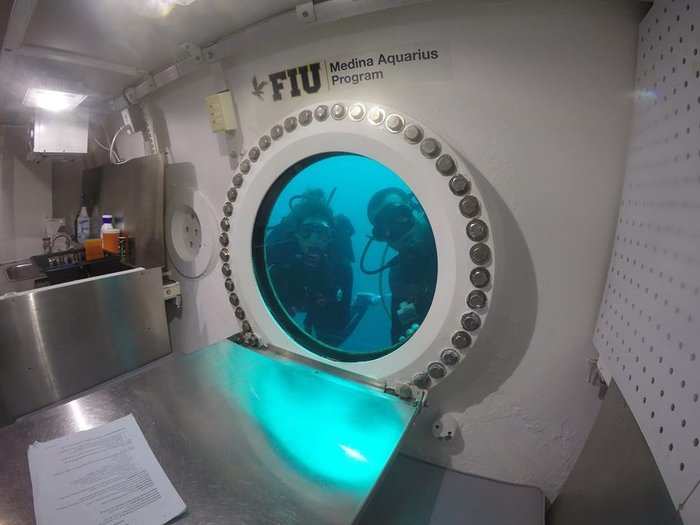
NASA uses the lab too — to practice techniques for exploring space.
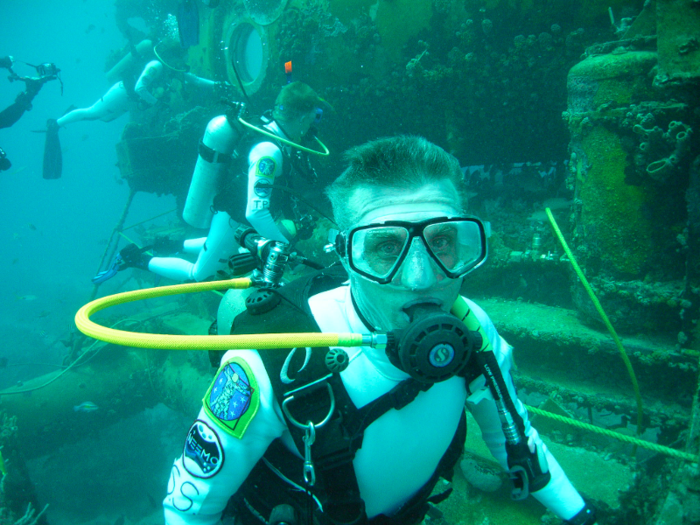
Surrounded by water, it’s perfect for the NASA Extreme Environment Mission Operations (NEEMO) program — and it even comes with alien life.

The underwater lab is not that different in size from the space station. “It’s about the size of a school bus so it’s quite cozy,” says Heithaus. They can usually accommodate 7 people or so at a time.
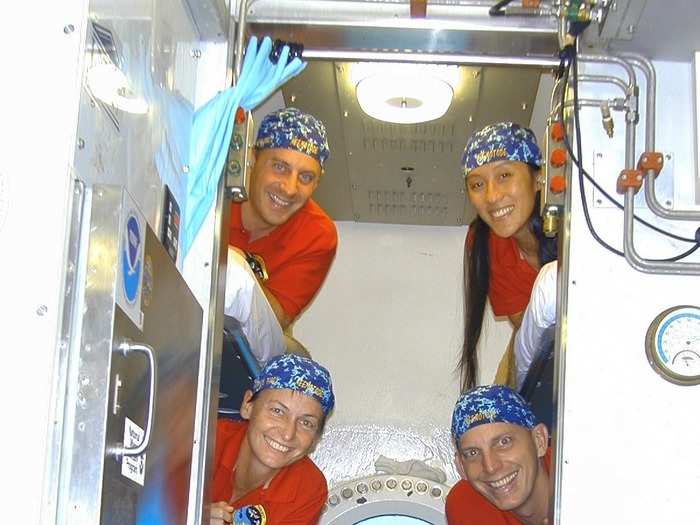
Researchers, students, and NASA or Navy aquanauts dive down to the station from the surface.

They actually have to get below the facility to reach the entrance.

They pop in what's called the "moon pool," and then they can just climb on in to the habitat. Pressure can be adjusted in an airlock between this room and the main one.
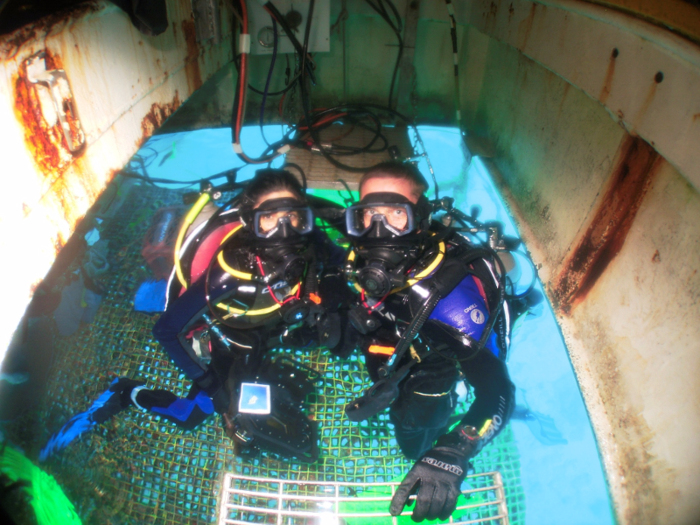
NASA trains for low or zero gravity situations underwater.

Astronauts test techniques they'd use to explore asteroids and get to see what working in hostile environments is like.

They conduct operations with built in communication delays to simulate missions on Mars.

But there's also plenty to discover about the ocean itself. FIU studies reefs and marine life, investigating the effects of pollution, climate change, and ocean acidification.

The base is in a marine protected area, so it’s got a healthier fish and coral population than many other underwater sites.

Heithaus plans on using it as a base for one part of a shark population survey he’s running later this summer.

Reefs are not just vital ecosystems, but also the keystone for the fishing industry and valuable tourism sites. Studying them is essential. "The back of the napkin estimate is that coral reefs worldwide are worth between 30 and 150 billion [dollars] in services every year," says Heithaus.
![Reefs are not just vital ecosystems, but also the keystone for the fishing industry and valuable tourism sites. Studying them is essential. "The back of the napkin estimate is that coral reefs worldwide are worth between 30 and 150 billion [dollars] in services every year," says Heithaus.](https://staticbiassets.in/thumb/msid-52561240,width-700,height-525,imgsize-3870529/reefs-are-not-just-vital-ecosystems-but-also-the-keystone-for-the-fishing-industry-and-valuable-tourism-sites-studying-them-is-essential-the-back-of-the-napkin-estimate-is-that-coral-reefs-worldwide-are-worth-between-30-and-150-billion-dollars-in-services-every-year-says-heithaus-.jpg)
The lab is also a hub for testing new underwater technologies. Heithaus says they’re using new sonar tech to create video images that can help them study sharks.
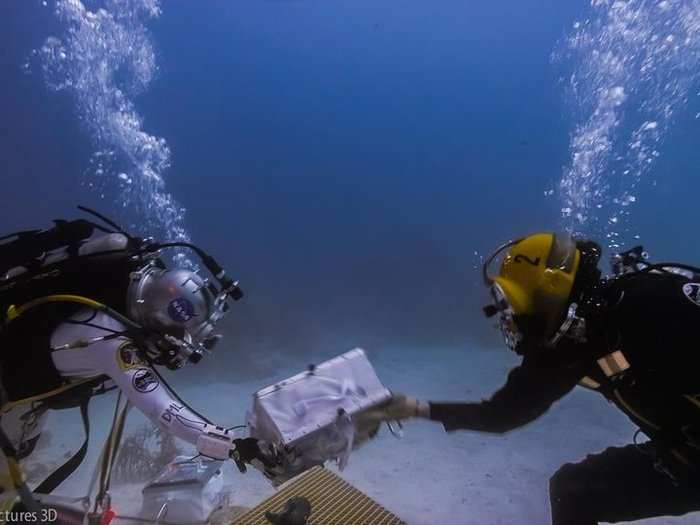
"You can be underwater, work with gear, tinker with it, and take it back out," he says.

Being able to spend a significant amount of time underwater is essential.

Divers normally can’t spend more than an hour or two underwater at a time and can only go up and down a couple times each day because gases build up in the body due to high pressure.

Since people at the Aquarius Reef Base don't go up to the surface, they can safely have those gases in them and work underwater up to nine hours a day.

"There’s just something really special about going in and [then] being able to pop up into the moon pool and ... take a shower," says Heithaus.
!["There’s just something really special about going in and [then] being able to pop up into the moon pool and ... take a shower," says Heithaus.](https://staticbiassets.in/thumb/msid-52561249,width-700,height-525,imgsize-1211686/theres-just-something-really-special-about-going-in-and-then-being-able-to-pop-up-into-the-moon-pool-and-take-a-shower-says-heithaus-.jpg)
"Then you look out the porthole with a giant Goliath grouper staring at you and pick up your phone and make a FaceTime call with WiFi." Heithaus says they have better internet down there than at many spots on the surface.

Since researchers and students don’t surface in between expeditions, they only have to depressurize when the mission is complete.

The habitat can change internal pressure, helping people remove excess gas from their bodies, so returning to the surface is easy.

Most missions aren’t longer than two weeks.

But the underwater record (31 days!) was set by Fabien Cousteau in the summer of 2014. Cousteau beat his grandfather Jacques by one day — though there's no reason to think someone couldn't set a longer record down there in the future.

Popular Right Now
Popular Keywords
Advertisement